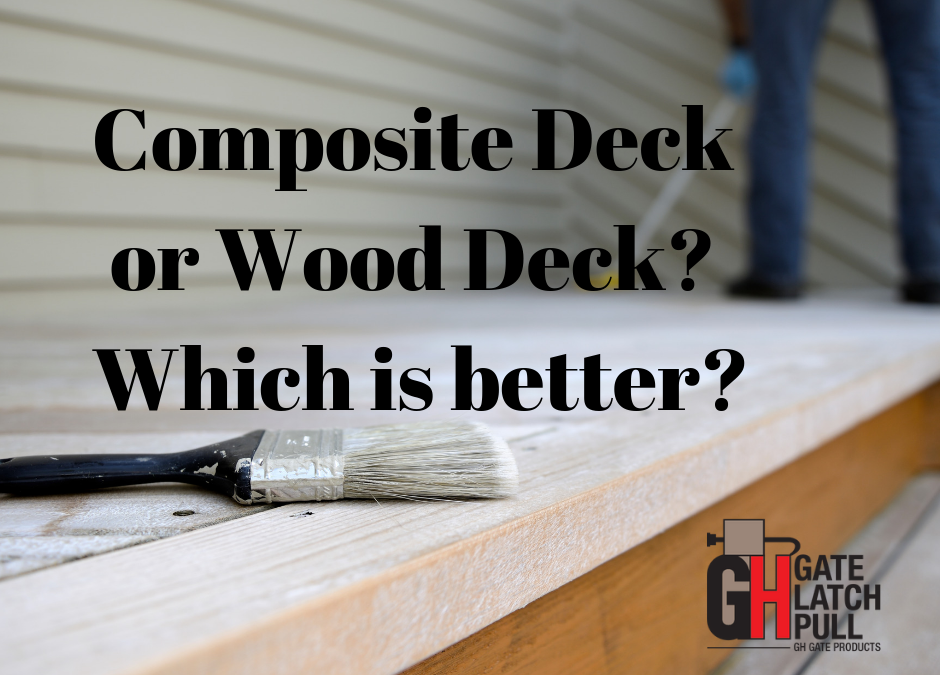How to Choose the Right Decking Material, Composite or Wood?
Wondering if composite decking would be a better choice than a traditional wood deck? As is true of almost every product; both wood and composite decks are sold with varying qualities, and pricing to match. Higher quality materials will be more expensive but likely require less upkeep and have a longer lifespan than lower quality materials. To nail down which decking material is the best fit for your needs and budget, we will examine the two main factors: price and maintenance.
Wood Decking
If you’re considering installing a wooden deck, you can rest easy, it’s well-known that high-quality wood can stand up the elements for the long haul. That being said, there are some aspects of a wood deck worth your consideration.
Price for Wood Deck
The type of wood you choose for your new deck will depend largely on your budget. However, the most affordable route would be to use treated lumber. One of the most popular woods to build with, at a lower price point, is Southern Pine.
Pine decks have a tendency to warp over time and so require more upkeep than premium wood decks. A solid “middle of the road” wood choice would be cedar. Cedar is known for its pleasing fragrance and beautiful appearance. However, cedar decks start to break down when exposed to significant moisture.
For a higher grade wood mahogany is an excellent choice as it is a gorgeous wood that is extremely resilient. Mahogany can last for many years with minimal maintenance or refurbishment needed.
Keep in mind that the cost of a wood deck is dependent on the type of woods used in construction, the location of the deck, and its actual size.
Maintenance for Wood Deck
Wood decks require regular T.L.C.; this is especially decks constructed using lower-end materials. Pine decks for example, can warp as they dry out or may experience chipping. On the other hand, mahogany and other high quality woods require minimum upkeep.
Most wood decks will need to be sealed and stained at some point. A good test of the state of your deck is a water test. Spray a tiny bit of water on the deck, and if it absorbs quickly, that it is a sign that you need to re-seal the wood. Conversely, if the water beads up then you are still protected.
Every two-to-three years it is wise to stain or seal the deck to keep the wood from degrading. Stay away from power-washing your deck as the wood can splinter and allow moisture in as well. With higher-end woods applying a preservative or stain once a year is recommended to protect your investment.
Composite Wood Decking
Composite decking is usually made up of some combination of plastics and wood particulates. You can choose from both solid and hollow composite boards.
Hollow deck boards cost less than solid boards and are less likely to expand and contract when the seasons change, but they are not as sturdy over the long term.
While solid composite boards shrink and expand more noticeably, they are stronger and mimic real wood better than hollow composite decks.
Price for Composite Deck
Composite decking price varies depending on many factors. The manufacturer used, the materials used to make the decking, and add-ons including improved water resistance and UV light protection can all impact the price.
Often, a composite deck requires a bigger expenditure up front, but reaps savings over time because of the less-intensive maintenance when compared with wood.
Maintenance for Composite Deck
While requiring much less upkeep than traditional wood decking, composite decks still require some looking after. Composite decking is susceptible to mold as well as some warping and scratching too.
Add-ons such as scratch resistance and UV light protect can mitigate some of the potential for damage. Also, consider installing a patio cover for additional protection from the elements.
Unlike standard wood decks, it is generally safe to use a power washer to clear your deck of any mold or any dirt from the composite boards. If you are looking to repaint a composite deck down the road it will likely require special paint or hiring a professional; it is a bit trickier than a wood deck in that regard.
No matter which route you go, your deck is an investment. Be sure to carefully consider the commitment required to keep your new deck looking great well into the future. And remember, you can pay a bit more upfront or pay yearly for the life of your deck.


Recent Comments
Original EZGT001 Gate Latch Pull In Black
Original EZGT001 Gate Latch Pull In Black
Original EZGT001 Gate Latch Pull In Black
Original EZGT001 Gate Latch Pull In Black
Original EZGT001 Gate Latch Pull In Black